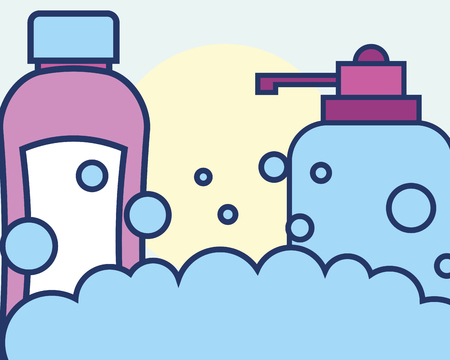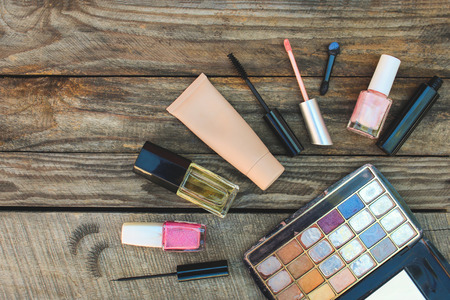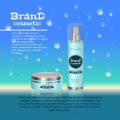Introduction to Refillable Beauty Products
The UK beauty market has witnessed a significant shift towards sustainable practices in recent years, with refillable beauty products emerging as a prominent trend. This movement is driven by increasing consumer awareness of environmental issues and the urgent need to reduce single-use plastic waste. Today, British shoppers are not only looking for high-performance cosmetics but also demanding eco-friendly alternatives that align with their values. Major industry players such as Lush, The Body Shop, and Charlotte Tilbury have responded by introducing innovative refill systems across skincare, haircare, and makeup categories. Meanwhile, a new wave of independent brands is further fuelling the trend by offering chic, reusable packaging and convenient in-store or online refills. As sustainability becomes an integral part of purchasing decisions, the UK beauty sector is adapting rapidly to meet these evolving expectations.
Key Industry Players and Consumer Trends
| Brand | Refillable Product Range | UK Launch Year |
|---|---|---|
| Lush | Shampoo Bars, Perfume Bottles | 2019 |
| The Body Shop | Shower Gels, Haircare, Skincare | 2021 |
| Charlotte Tilbury | Lipsticks, Face Creams | 2020 |
| Beauty Kitchen | Cleansers, Moisturisers | 2018 |
| Wild Refill Deodorant | Deodorants | 2020 |
This rising interest in sustainable beauty reflects broader societal shifts in the UK. According to recent market research, over 60% of UK consumers now consider a brand’s environmental credentials when purchasing beauty products. This growing demand for transparency and eco-consciousness is driving brands to rethink traditional packaging and invest in circular solutions—setting a new standard for the future of British beauty.
2. Consumer Behaviour and Attitudes in the UK
As the demand for sustainable beauty continues to rise, understanding British consumers’ behaviour towards refillable beauty products is crucial for analysing their environmental impact in the UK market. In recent years, British shoppers have become increasingly eco-conscious, with sustainability playing a significant role in purchasing decisions. However, preferences and perceptions regarding refillable solutions remain varied across demographics.
Key Factors Shaping Preferences
Convenience, product availability, and brand reputation are among the top factors influencing the adoption of refillable beauty products in the UK. Many consumers appreciate the reduced packaging waste and long-term cost savings associated with refills. However, concerns about product hygiene and limited shade or formula selection can deter some from making the switch.
Consumer Perceptions: A Snapshot
| Aspect | Positive Perception (%) | Negative Perception (%) |
|---|---|---|
| Environmental Benefits | 68% | 10% |
| Cost-effectiveness | 54% | 18% |
| Convenience of Use | 46% | 35% |
| Product Hygiene | 29% | 41% |
| Availability of Options | 37% | 33% |
Adoption Rates and Demographic Trends
Younger consumers (aged 18-34) in urban centres such as London and Manchester show the highest adoption rates for refillable beauty products, particularly when these options are promoted by trend-setting brands or endorsed by influencers on platforms like Instagram and TikTok. Conversely, older age groups tend to prioritise established routines and are less likely to trial new refill formats unless incentivised by loyalty schemes or price reductions.
The data suggests that while British consumers are generally receptive to refillable beauty solutions, widespread adoption hinges on addressing practical concerns and enhancing accessibility. As refill stations become more commonplace in high-street retailers and department stores across the UK, positive attitudes towards sustainable beauty are expected to translate into increased usage—contributing meaningfully to reduced environmental impact.

3. Environmental Benefits and Challenges
Refillable beauty products are increasingly being embraced in the UK for their perceived environmental benefits, especially when compared to traditional single-use packaging. The main advantage lies in the significant reduction of plastic waste and the lower demand for raw materials, as consumers purchase refills rather than entirely new containers. This shift directly supports the UKs broader sustainability goals by lessening landfill contributions and promoting a circular economy. However, these positives are counterbalanced by notable challenges that brands and consumers must navigate.
Comparing Environmental Impact: Refillable vs Single-Use
| Aspect | Refillable Products | Single-Use Products |
|---|---|---|
| Packaging Waste | Significantly reduced over time | High, due to frequent disposal |
| Material Usage | Initial investment higher, but reused | Constant need for new materials |
| Carbon Footprint | Lower per use if refilled multiple times | Higher due to continuous production |
Supply Chain Implications
The adoption of refillable systems introduces complexities into the supply chain. Brands operating within the UK must ensure efficient collection, cleaning, and redistribution of reusable containers. Transport logistics can become more intricate, potentially increasing emissions if not managed effectively. Additionally, local infrastructure must support widespread access to refill stations or convenient mail-back schemes, which may not yet be fully established outside major urban centres.
Waste Management Difficulties
While refillables promise a reduction in single-use waste, improper disposal or inadequate recycling facilities can undermine these benefits. For instance, if refill pods or sachets are made from non-recyclable materials or contaminated during use, they risk ending up in landfill regardless of their intended eco-friendly design. Local councils across the UK have varied recycling capabilities, which may affect the ultimate sustainability of these products.
Towards a Balanced Approach
A successful transition to refillable beauty requires collaboration between brands, retailers, and consumers. Education around correct usage and disposal is crucial to maximise environmental gains. Ultimately, while refillables hold great promise for reducing the beauty industry’s environmental impact in Britain, overcoming supply chain and waste management hurdles will determine their true effectiveness.
4. Brand Initiatives and Innovations
The surge in demand for eco-conscious beauty solutions has prompted both British and international brands to develop refillable product lines specifically tailored to the UK market. This movement is not just about reducing packaging waste; it’s also about creating a new consumer experience that aligns with UK sustainability values and shopping habits.
Leading Brands Pioneering Refillable Beauty
Several well-known names have paved the way for refill innovation, combining style, convenience, and environmental responsibility. High street staples like Lush and Neal’s Yard Remedies have introduced dedicated refill stations in their flagship stores, allowing customers to replenish everything from shower gels to facial cleansers. Meanwhile, luxury brands such as Charlotte Tilbury and Kilner have launched elegant refill capsules for their bestselling skincare and makeup products, ensuring minimal disruption to the iconic look of their packaging.
Refill Stations and Sustainable Packaging: UK Market Examples
| Brand | Refillable Product Line | Sustainable Innovation |
|---|---|---|
| Lush | Naked Shower Gels & Soaps | In-store refill stations, package-free formats |
| Neal’s Yard Remedies | Skincare & Aromatherapy Oils | Glass bottle refills, local sourcing |
| The Body Shop | Shampoos & Conditioners | Aluminium refill bottles, digital tracking of refills |
| Charlotte Tilbury | Pillow Talk Lipsticks | Lipstick refills in recyclable cartridges |
Catering to British Consumer Preferences
The UK audience values practicality and authenticity alongside sustainability. Brands have responded with refill designs that are easy to use and stylish enough for British bathrooms or handbags. For instance, The Body Shop’s aluminium bottles are lightweight yet robust—ideal for busy commuters—while Lush focuses on zero-packaging “naked” products that eliminate plastic entirely. These innovations are supported by clear in-store signage and staff training, making the refill process straightforward even for first-time users.
The Role of Collaboration and Localisation
A key trend is collaboration between brands and UK-based designers or recycling initiatives, resulting in packaging that appeals aesthetically while being fully recyclable within local infrastructure. Some companies now offer incentives such as loyalty points for returning empty containers, further encouraging sustainable habits among British shoppers.
This multi-pronged approach—combining unique refill stations, bespoke packaging design, and consumer education—places the UK at the forefront of the refillable beauty revolution, setting an example for other markets seeking to lower their environmental impact without compromising on quality or style.
5. Regulatory Landscape and Policy Impact
The UK government has taken significant steps to address environmental concerns within the beauty sector, particularly as they relate to packaging waste and the adoption of sustainable practices such as refillable products. This section explores key policies, targets, and incentives shaping the market for refillable beauty products in Britain.
Government Policies and Environmental Targets
In recent years, the UK government has introduced a suite of regulations aimed at reducing single-use plastics and encouraging circular economy principles. The following table outlines some pivotal policies impacting the beauty industry:
| Policy/Regulation | Description | Impact on Beauty Brands |
|---|---|---|
| Plastic Packaging Tax (2022) | Tax on plastic packaging with less than 30% recycled content. | Incentivises brands to use recycled materials or alternative solutions like refillable containers. |
| Extended Producer Responsibility (EPR) | Makes producers financially responsible for the environmental impact of their packaging throughout its lifecycle. | Encourages reduction in overall packaging and investment in refill systems. |
| Single-Use Plastics Ban (2023) | Bans selected single-use plastic items such as straws, cotton buds, and stirrers. | Pushes brands towards reusable, refillable alternatives in product design. |
| Net Zero by 2050 Target | Legally binding target to achieve net zero greenhouse gas emissions by 2050. | Drives industry-wide sustainability initiatives including reduced waste and circular models like refills. |
Incentives for Adoption of Refillable Products
The regulatory environment is complemented by financial incentives and public awareness campaigns designed to accelerate the shift towards more sustainable consumption patterns:
- Funding for Innovation: Grants are available from bodies like Innovate UK to support research into sustainable packaging and refill technology.
- Local Council Initiatives: Several councils across England offer business rate reliefs or support for retailers piloting zero-waste or refill schemes.
- Ecolabel Certification: Products meeting high environmental standards can display ecolabels, influencing consumer choice and rewarding sustainable innovation.
Policy Impact on Consumer Behaviour and Market Dynamics
The convergence of regulation, incentives, and public demand has led major beauty retailers and brands to invest in refill stations, recyclable packaging, and return-and-reuse schemes. British consumers are increasingly aware of their environmental footprint, with many citing government policy as a motivator for changing purchasing habits. As the regulatory landscape continues to evolve, we can expect further growth in refillable beauty offerings and greater collaboration between policymakers, brands, and consumers to meet ambitious sustainability goals.
6. Future Trends and Recommendations for the UK Market
Emerging Trends in Refillable Beauty
The UK beauty market is undergoing a significant transformation as refillable products become increasingly mainstream. Major brands are introducing innovative packaging solutions, while independent labels are leading the charge with zero-waste stores and subscription-based refills. Noteworthy trends include the use of biodegradable materials, closed-loop recycling programmes, and collaborations with environmental organisations to improve consumer education.
Predicted Market Growth
Industry analysts predict robust growth for refillable beauty in the UK over the next five years. The table below highlights key forecasts:
| Year | Estimated Market Value (£ Billion) | Percentage of Beauty Market (%) |
|---|---|---|
| 2024 | 0.8 | 7% |
| 2026 | 1.4 | 11% |
| 2029 | 2.5 | 18% |
This steady rise reflects both heightened consumer demand and regulatory encouragement towards sustainable choices.
Expert Recommendations for Brands
- Pursue Transparency: Clearly communicate sustainability credentials and lifecycle analyses on product labelling.
- Invest in Durable Packaging: Focus on designs that encourage repeated use without compromising aesthetics or functionality.
- Expand Refill Accessibility: Offer convenient refill stations in high-street locations and integrate seamless online ordering systems.
Guidance for UK Consumers
- Select brands prioritising traceable, eco-friendly materials.
- Support local refill initiatives to reduce carbon footprint associated with transport.
- Stay informed about best practices for cleaning and returning refill containers to ensure hygiene and recyclability.
Towards a Greener Beauty Future
If brands and consumers work collaboratively—combining innovation, education, and conscious purchasing—the UK beauty sector can set new standards for environmental responsibility. Proactive adaptation to these trends will not only protect the planet but also appeal to the growing base of eco-minded British shoppers seeking both style and substance in their beauty routines.


